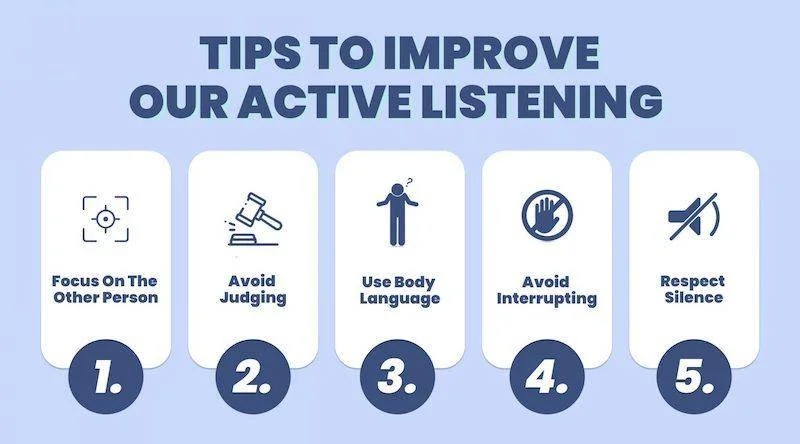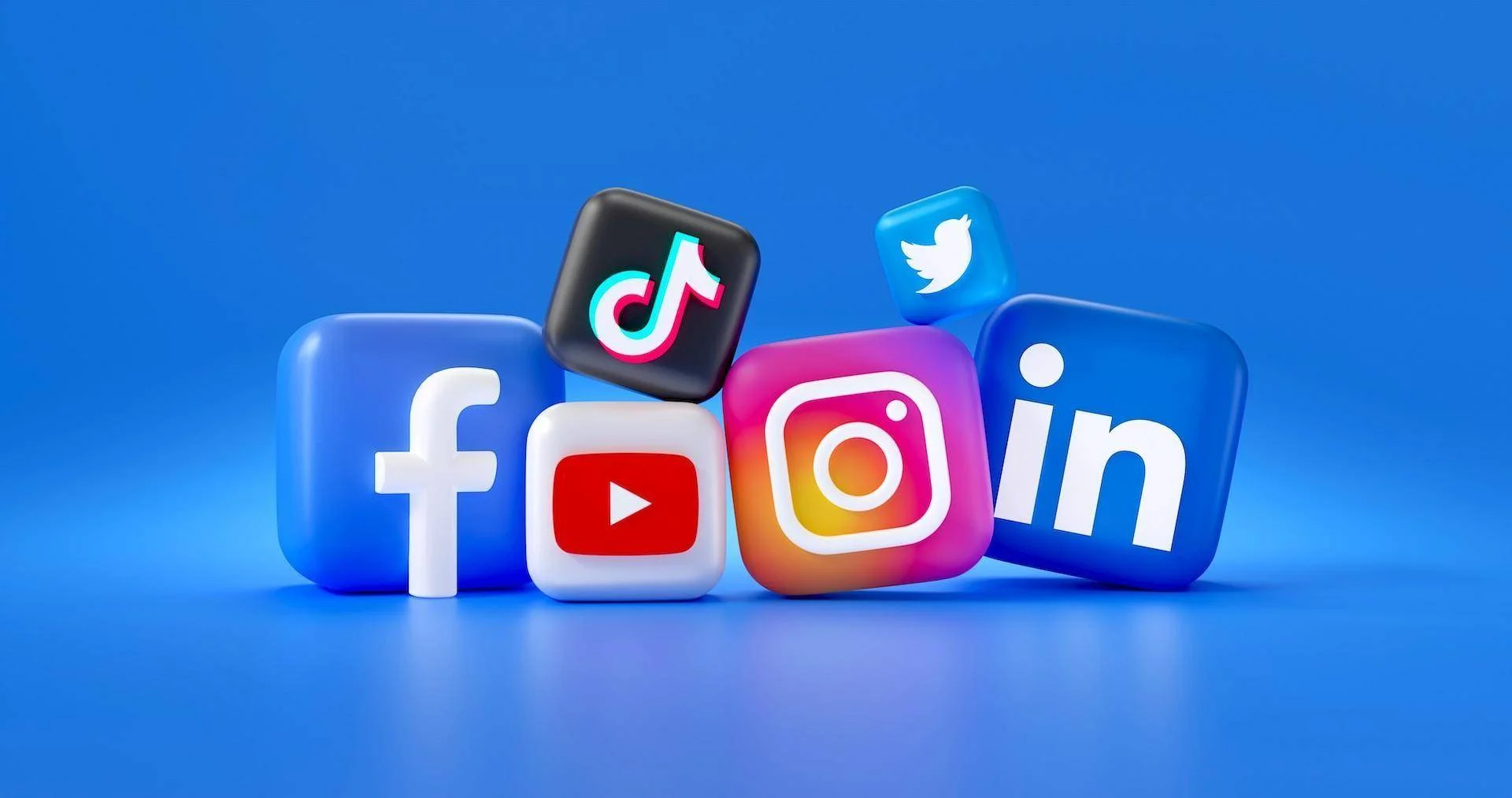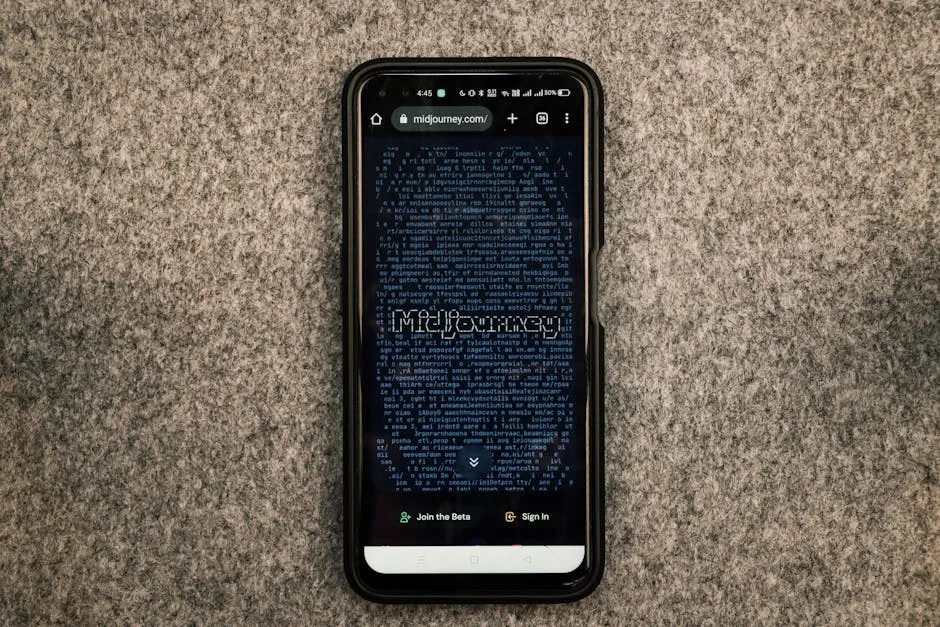In the bustling world of sales, where numbers and targets often take the spotlight, there lies an understated secret to success: relationships.
As a Business Development Representative (BDR), your role goes beyond just making calls and sending emails; it’s about forging connections that can turn cold leads into warm partnerships.
In this article, we’ll explore the art of building relationships—not just for the sake of closing deals, but for nurturing a network that thrives on trust, understanding, and collaboration.
Whether you’re a seasoned pro or just starting your journey in sales, let’s dive into the friendly strategies that will help you connect, engage, and ultimately, succeed in this dynamic landscape.
Ready to turn your interactions into lasting relationships? Let’s get started!
Table of Contents
ToggleMastering the Art of the First Impression
As a Business Development Representative, crafting a stellar first impression is your first step towards building lasting relationships.
According to studies, most people form an impression in just 7 seconds—a fleeting moment you must make count! Here’s how you can turn those precious seconds into a foundation for long-term connections.
Be Genuine & Authentic
People can often tell when you’re being insincere. Authenticity is about more than just honesty; it’s about showing your true self in a professional but relatable manner.
Smile genuinely, maintain appropriate eye contact, and listen actively to what the other person is saying. Show that you’re genuinely interested in their needs and concerns.
Pay Attention to Non-Verbal Cues
Non-verbal communication can speak volumes. Your body language, facial expressions, and even your attire play crucial roles in how you are perceived.
Stand tall, keep your posture open and approachable, and dress appropriately for the situation. An inviting demeanor can break the ice faster than words.
Prepare Your Introduction
Having a well-rehearsed introduction can help you exude confidence. This isn’t just about stating your name and job title; it’s about crafting a concise narrative that piques interest.
Highlight something unique about yourself or your company that aligns with the interests of who you’re meeting.
Avoid jargon, and be clear and concise.
Create Shared Value
The goal is not to impose but to propose value. Ask questions that show you care about the other person’s goals and challenges. Tailor your conversation to reflect how you can provide solutions or insights that matter to them. Here’s a golden rule: focus on being helpful rather than transactional.
Follow Up Effectively
Your first impression shouldn’t stop at the initial encounter. A thoughtful follow-up can solidify your presence in the other person’s memory.
Send a personalized thank you note or email summarizing key points discussed and any agreed-upon next steps. This can be a powerful way to demonstrate your commitment and professionalism.
| Aspect | Tip |
|---|---|
| Genuine & Authentic | Smile, listen, be interested |
| Non-Verbal Cues | Positive body language, dress well |
| Introduction | Craft a clear, engaging narrative |
| Shared Value | Focus on being helpful |
| Follow Up | Send personalized thank you notes |
Crafting Personalized Outreach that Resonates
Engaging prospects effectively requires more than just a template. Personalization is key, and it starts with understanding the person behind the email address or phone number.
Begin by researching your target to gather valuable insights that help tailor your message specifically to them. LinkedIn profiles, company websites, and social media activity can provide golden nuggets of information to make your outreach stand out.
Here are some elements to consider while crafting your message:
- Shared Connections: Mention any mutual contacts to establish instant credibility and rapport.
- Recent Achievements: Highlight any recent milestone or accolade your prospect has achieved, showing that you’ve done your homework.
- Common Interests: Identify and refer to shared interests to create a deeper connection beyond the business context.
It’s important to balance personalization with professionalism.
While a touch of informality can humanize your outreach, maintaining a level of formality ensures you come across as respectful and earnest about the potential collaboration.
Using the prospect’s name throughout the message, referring to their role and responsibilities, and aligning your product or service with their pain points can significantly enhance engagement.
Consider this example template as a starting point:
| Section | Example |
|---|---|
| Introduction | Hi [First Name], I noticed we both enjoy [Common Interest]… |
| Main Body | Congratulations on [Recent Achievement]! Given your role at [Company]… |
| Conclusion | Would love to discuss how we can [Solve Specific Problem]. Looking forward to your thoughts! |
Becoming a Trusted Advisor in Every Interaction
As a BDR, your role is not merely to make sales but to go beyond the transactional to build a meaningful, long-term relationship. The key to achieving this is by positioning yourself as a trusted advisor.
But how exactly can you do that in every interaction? Here are some essential elements to consider:
- Listen Actively: Give full attention to your client’s needs and concerns. This not only demonstrates that you value their input but also provides you with crucial insights to tailor your solutions effectively.
- Provide Value Consistently: Whether through insightful content, industry trends, or personalized recommendations, make sure that every interaction leaves your client better informed or equipped to deal with their own challenges.
- Be Transparent: Honesty builds trust. If a solution isn’t right for the client, say so. Your integrity will pay off in the long run.
Building trust isn’t a one-off event; it’s a continuous process that involves nurturing the relationship. Let’s dive deeper into some actionable strategies:
- Regular Follow-Ups: Keep the lines of communication open. Regularly check in with your clients even when you aren’t making a sales pitch. This shows that you care about their success beyond just the initial sale.
- Ask for Feedback: Constructive criticism can help you improve your offerings and services. It also makes clients feel valued and invested in the relationship.
- Offer Solutions, Not Just Products: Position your offerings as solutions to specific problems your clients are facing. This shows that you understand their needs and are committed to helping them succeed.
Here’s a quick comparison of Effective Advisor Traits vs. Transactional Behavior:
| Effective Advisor Traits | Transactional Behavior |
|---|---|
| Active Listening | One-Sided Talking |
| Providing Value | Product Pitching |
| Transparency | Overpromising |

The Power of Active Listening and Empathy
These two skills can turn surface-level interactions into meaningful connections.
Active listening goes beyond just hearing words; it involves fully engaging with the speaker’s feelings and perspectives.
By showing that you are truly listening, you convey respect and understanding. Here are some essential active listening techniques:
- Pay Attention: Maintain eye contact, nod occasionally, and remove distractions to show you’re fully present.
- Show That You’re Listening: Use small verbal acknowledgments like “I see” or “I understand” to affirm the speaker.
- Provide Feedback: Reflect on what’s been said by paraphrasing or summarizing to ensure comprehension.
- Defer Judgment: Listen without jumping to conclusions or interrupting, allowing the speaker to finish.
- Respond Appropriately: Offer well-thought-out responses that acknowledge and validate the speaker’s points.
Empathy complements active listening by enabling you to put yourself in the other’s shoes. It’s about connecting emotionally and understanding their perspective deeply. Empathy in action can involve:
- Recognizing emotions: Notice verbal and non-verbal cues to grasp how the other person is feeling.
- Validating feelings: Acknowledge their emotions with statements like, “It sounds like that was really challenging for you.”
- Being supportive: Offer help or solutions while maintaining a non-judgmental stance.
For BDRs, forging strong client relationships often requires perfecting these skills.
Consider the following benefits of active listening and empathy in your interactions:
| Benefit | Description |
|---|---|
| Trust Building | Clients feel heard and valued, fostering trust. |
| Enhanced Understanding | Gains insights into clients’ needs and challenges. |
| Effective Problem Solving | Identifies and addresses issues more precisely. |
Ultimately, active listening coupled with empathy can transform your approach to client interactions, creating more meaningful and fruitful relationships.

Leveraging Social Media to Build Authentic Connections
Here are a few ways to achieve that:
- Share Valuable Content: Regularly post content that resonates with your target audience. This can be industry news, insightful articles, or even personal anecdotes that highlight your expertise and human side.
- Engage Actively: Don’t just post and ghost. Make sure to comment on others’ posts, join relevant groups, and be a part of discussions. Genuine engagement helps in establishing a strong rapport.
- Be Consistent: Whether it’s your posting schedule or the tone of your messages, consistency builds credibility. Designate specific times for outreach and make it a part of your routine.
| Platform | Audience | Best Practices |
|---|---|---|
| Professionals | Share industry insights, join relevant groups, and engage in meaningful conversations. | |
| Mix of professionals and enthusiasts | Post regular updates, use hashtags, and participate in trending topics. | |
| Young professionals and brands | Use visuals to tell a story, engage with comments, and use IG stories. |
Always remember, the goal is to build genuine relationships rather than chasing numbers. Focus on quality interactions and how you can add value to your connections’ lives.
Over time, this authentic approach will not only help you build a loyal network but also position you as a trusted advisor in your industry.
Following Up: The Secret Weapon to Relationship Building
Following up helps you stay on your prospect’s radar, showing persistence and genuine interest.
Here are some key tips to make your follow-ups more effective:
- Personalize Your Message: Always add a personal touch to your follow-ups. Mention something specific you discussed or a unique detail about their business. This shows that you were actively listening and are genuinely interested in addressing their needs.
- Timing is Everything: Find that sweet spot for your follow-ups. Neither too early to seem desperate nor too late to be forgotten. A well-timed follow-up shows your professionalism and respect for their time.
- Provide Value: Share relevant content, such as case studies, articles, or insights, that could benefit them. Adding value in every interaction leaves a positive impression and builds trust and credibility.
Consistency is key when it comes to following up. Creating a schedule and sticking to it can significantly improve your success rate. Here’s a simple follow-up schedule you can adopt:
| Follow-Up | Time Frame |
|---|---|
| Initial Contact | 1-2 Days After First Meeting |
| Second Follow-Up | 1 Week Later |
| Third Follow-Up | 2 Weeks Later |
| Monthly Check-ins | Every Month |
Remember, every follow-up is an opportunity to build rapport and move the relationship forward. Keep your communications clear, concise, and courteous.
With a well-planned follow-up strategy, you’ll not only build strong relationships but also create a network of loyal clients and partners.
Managing Rejection with Grace and Persistence
As a Business Development Representative (BDR), encountering rejection is an almost daily part of your routine. However, how you handle these rejections can set you apart from your peers and help you build long-term relationships.
It’s essential to address rejection with a balance of grace and persistence.
Firstly, remember to acknowledge the rejection. A simple, heartfelt response can leave a lasting impression. Let your contacts know that you respect their decision but remain open to future opportunities to collaborate. Emphasize your understanding with phrases like, “I appreciate your feedback” and “Thank you for considering us.”
Demonstrating professionalism and gratitude, even in the face of refusal, can foster respect and trust.
- Acknowledge and thank immediately.
- Express understanding and openness for future opportunities.
- Maintain a positive and professional tone.
Secondly, utilize rejection as a learning experience. Analyze the reasons behind the rejection to understand any areas for improvement. Flipping the coin on rejection can help you refine your approach and better tailor your solutions to meet the needs of your prospects.
Consider crafting a feedback loop where you gently inquire about the reasons for their decision, leading to insights that can fuel your future strategies.
| Rejection Reason | Possible Adjustment |
|---|---|
| Price too high | Offer customized pricing plans |
| Lack of need | Engage in deeper needs analysis |
| Prefer competitor | Emphasize unique selling points |
Lastly, don’t forget the power of consistent follow-up with a personal touch.
Engage with your prospects on social media, congratulate them on their achievements, and share content that may be of interest to them. These small gestures show that you value them beyond just a business deal.
Persistence, when combined with genuine interest and respect, transforms what could be a fleeting connection into a robust, long-lasting relationship.
- Follow-up consistently without being intrusive.
- Personalize interactions based on their interests.
- Share valuable content and congratulate achievements.

Cultivating Long-term Partnerships Beyond the Sale
As a Business Development Representative (BDR), one of the most significant investments you can make is in establishing and maintaining long-term relationships with clients.
This not only fosters trust but also cultivates opportunities for future collaborations.
- Regular Check-ins: Don’t let communication fizzle out. Schedule frequent, informal check-ins to catch up and discuss any updates or support they might need.
- Personalization: Remember key details about your clients such as birthdays, hobbies, or significant milestones. This shows genuine interest beyond just business.
Offering value beyond the sale is crucial. Here’s how you can consistently provide value:
- Share Industry Insights: Regularly send them relevant market trends, reports, or articles that align with their interests.
- Introduce New Opportunities: Be proactive in suggesting new products, services, or partnerships that could benefit them.
| Activity | Benefit |
|---|---|
| Monthly Industry Updates | Keeps client informed and engaged |
| Personalized Check-ins | Builds trust and personal connection |
| Exclusive Webinars | Provides value and showcases expertise |
Cultivating these relationships requires effort but pays dividends in client loyalty and satisfaction. By embedding yourself as a key resource and partner, you ensure the relationship remains dynamic, fruitful, and mutually beneficial, far beyond the initial sale.
Using Data to Understand and Deepen Relationships
In the fast-paced world of a Business Development Representative (BDR), leveraging data to foster meaningful connections can be a game-changer.
Understanding your prospects on a deeper level can transform cold outreach into warm, engaging conversations.
Here are some strategies you can implement:
- Personalized Outreach: Utilize data to personalize your communication. LinkedIn profiles, recent news articles, or mutual connections can provide insights into what matters most to your prospects.
- Track Engagement: Use CRM tools to monitor how prospects are interacting with your emails, content, and website. Knowing which resources they engage with can tailor your follow-ups more effectively.
- Analyze Communication Patterns: Pay attention to how and when your prospects prefer to communicate. Some may favor quick emails over lengthy calls; adapt your approach accordingly.
One powerful way to understand your prospects is to analyze their industry and company data. This helps in crafting messages that resonate with their specific needs and challenges. Here’s an example of how you can segment data for deeper insights:
| Data Type | Insight | Actionable Step |
|---|---|---|
| Industry Trends | Identify hot topics and challenges | Create value-driven content addressing these issues |
| Company News | Learn about recent milestones or changes | Refer to these updates in your outreach |
| Social Media Activity | Gauge their engagement and interests | Engage with their posts to start a conversation |
Incorporating these data-driven insights not only enhances your initial outreach but also deepens your ongoing relationship. The goal is to move from being just another sales person to a trusted advisor who truly understands and addresses their unique needs.
With every interaction, aim to build trust and authenticity, leveraging data to guide your conversations and demonstrate your genuine interest in their success.
Harnessing the Magic of Networking Events and Introductions
Creating meaningful relationships as a Business Development Representative (BDR) often begins with mastering the art of networking events and introductions.
These gatherings serve as gateways to expanding your connections, gleaning new insights, and uncovering opportunities.
So, how can you harness the magic of networking events to build these essential relationships?
First and foremost, choose the right events. Whether it’s a business mixer, a virtual workshop, or a specialized industry conference, the right event will align with your goals and interests.
Diversify your approach by exploring different types of networking opportunities, such as:
- Business Mixers: Casual, after-hour events ideal for initial connections and relaxed conversations.
- Webinars: Focused sessions where you can learn and interact with speakers, taking notes for further engagement.
- Workshops: Practical and hands-on, perfect for demonstrating your skills and collaborating in real-time.
Once at an event, master your introduction. Your first impression is crucial; it sets the tone for future interactions.
Keep your introduction concise yet engaging—mention who you are, what you do, and a unique value proposition.
Here’s a simple formula to follow:
| Key Element | Example |
|---|---|
| Name & Role | “Hi, I’m Alex, a BDR at XYZ Corp.” |
| What You Do | “I help our clients streamline their supply chain processes.” |
| Unique Proposition | “We’ve developed a method that cuts costs by 20% without compromising on quality.” |
Follow-through is key. It’s not enough to simply make connections; nurturing them beyond the event is what solidifies these relationships.
Schedule follow-up calls or coffee meetings, express genuine interest in their work, and find ways to collaborate. These small yet significant gestures can transform a brief meeting into a lasting professional relationship.
Remember, networking is more than just exchanging business cards.
It’s about creating a genuine connection that offers mutual value. By thoughtfully selecting events, crafting impactful introductions, and diligently following up, you can unlock the true potential of networking to elevate your career as a BDR.
FAQ
Q1: Why are relationships crucial for a BDR?
A1: Think of relationships as the secret sauce in the recipe for success! As a BDR, your role isn’t just about hitting those numbers — it’s about creating lasting connections. Building relationships helps you understand your prospects’ needs, position your solutions effectively, and ultimately convert those leads into loyal customers. Plus, who doesn’t want to be the go-to person for their clients?
Q2: What’s the first step in building relationships with prospects?
A2: It all starts with genuine curiosity! Instead of jumping straight into a sales pitch, take the time to learn about your prospects. Ask open-ended questions about their challenges and goals. This approach not only shows that you care but also helps you tailor your messaging to resonate with their unique situation. It’s like being a detective, but way more fun!
Q3: How can I break the ice during initial outreach?
A3: Icebreakers are your best friends! A little creativity goes a long way here. Refer to a recent achievement of theirs on LinkedIn, sprinkle in a bit of humor, or share a common interest. You want them to feel like they’re not just receiving another generic message. Remember, people love talking about themselves, so give them the platform to do just that!
Q4: What role does follow-up play in relationship building?
A4: Think of follow-up as a bouquet of flowers to continue nurturing that relationship! A timely follow-up can show that you’re interested and invested, not just in the sale but in their success. Whether it’s a quick email sharing a helpful resource or a friendly check-in, consistent communication can turn a fleeting interaction into a blossoming partnership.
Q5: How important is active listening in this process?
A5: Active listening is like having superpowers as a BDR! It allows you to truly understand your prospects’ needs and concerns. By repeating back what you’ve heard and asking clarifying questions, you not only build trust but also demonstrate that you value their input. It’s less about hearing and more about connecting!
Q6: What can I do to maintain relationships after the initial contact?
A6: Don’t let relationships go stale! Regularly engage with your prospects by sharing relevant industry insights, inviting them to webinars, or sending personalized birthday wishes. You could even send a thoughtful thank-you note. These little gestures show that you’re committed to the relationship and not just pushing for the next sale.
Q7: How can networking events help in relationship building?
A7: Ah, the magic of networking events! These gatherings are perfect for meeting prospects and expanding your circle. Prepare a few engaging questions and be ready to share your story. The more authentic and approachable you are, the more connections you’ll make! Plus, these events can offer a treasure trove of potential leads. Who wouldn’t want to mingle while cultivating professional relationships?
Q8: Any final tips for BDRs looking to excel in relationship building?
A8: Stay genuine, be patient, and don’t be afraid to show your personality! Building relationships is a marathon, not a sprint. Embrace the journey, keep learning, and remember that every interaction is an opportunity to grow. Celebrate the small wins and stay curious. After all, building authentic connections is not just good for business—it’s good for the soul!
Final Thoughts
As you can see, building relationships as a Business Development Representative isn’t just about numbers and metrics; it’s about genuine connections and nurturing trust. Like planting a garden, these relationships require patience, attention, and a touch of creativity. B
y being authentic, listening actively, and showing empathy, you can cultivate bonds that not only enhance your professional life but can also blossom into lasting partnerships.
Remember, every call you make and every email you send is an opportunity to turn a potential client into a lifelong advocate. So go out there, put these strategies into practice, and watch your network flourish!
With each conversation, you’re not just selling a service; you’re creating a community. Here’s to your journey of connection—may it be fruitful, fulfilling, and fun!
Happy networking!



 I'm Alex. I am a self described creative entrepreneur (and also a fine artist). You could say I'm an abstract painter by day and a tech nerd by night. I worked in sales as a lead generation expert and closer for over 15 years and now I'm sharing my knowledge and experience with others.
I'm Alex. I am a self described creative entrepreneur (and also a fine artist). You could say I'm an abstract painter by day and a tech nerd by night. I worked in sales as a lead generation expert and closer for over 15 years and now I'm sharing my knowledge and experience with others.  Free Cold Email Course
Free Cold Email Course





 No credit card required
No credit card required